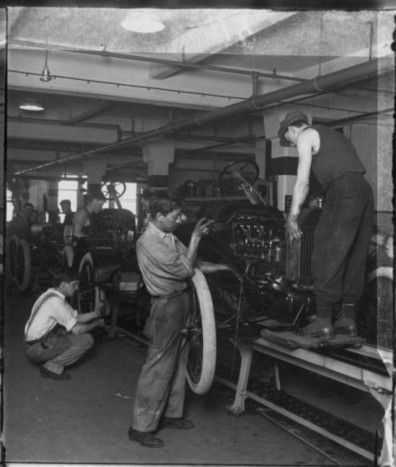Oct 12 2013
Silos, “Value Streams,” and Lean Implementation
The on-line chatter about Lean is all about how you need to break down functional departments — or silos — and organize the company around “Value Streams” that encompass all the resources needed to fulfill orders for a product or product family, and are close cousins of BPR’s business processes and Wickham Skinner’s focused factories. When discussing implementation, however, the same value stream boosters/silo busters recommend that you start by setting up a “Kaizen Promotion Office” or “Lean Department.” This reminds me of the 1980s BBC series Yes Minister, in which an effort to streamline government starts with the creation of a new “Ministry of Administrative Affairs” and the hiring of 25,000 more civil servants to do the streamlining.
While it is ironic to create a new functional department while talking value streams, it reflects a reality: the notion of organizing everything by value stream is simplistic. As discussed in my comments on Deming’s exhortation to break down barriers between departments, there are many activities in a manufacturing organization that we cannot or should not distribute among value streams, including the following:
- Processes like heat treatment, painting or plating that we have to operate as common services performed on monuments for multiple value streams because we technically do not know how to execute them on smaller machines that can be dedicated by production lines.
- Support services like maintenance that require a minimum number of members of members for at least one to be available when called. If you have 20 technicians in a central maintenance department that are busy 80% of the time, then at least one will be available if a machine breaks
of the time. If you split this department into 4 groups of 5 technicians each assigned to a value stream, then, if a machine breaks down within any value stream technician availability will be reduced to an unacceptably low $latex 1-.8^{5}=67\%$ of the time.
- Support services that deal with external entities on behalf of the whole company or plant, like Quality or Safety for certification, or Shipping and Receiving with truckers.
- Support services whose job it is to maintain a common environment for operations, such as technical data management or IT.
- …
As for the Kaizen Promotion Office or Lean Department, mission creep all too often takes it from a feasible facilitation and communication role to a direct implementation role, which is hopeless because:
- The operations groups have no ownership of the changes made by the Lean Department, do not understand them, and frequently reverse them as soon as they have a chance.
- The Lean Department cannot be large enough to have the capacity to do everything that is needed.
For the changes to happen and to stick, there is no alternative to leadership from within the organizations responsible for the target operations and participation by individuals who are directly affected.




Oct 13 2013
8 Reasons Lean Implementations Fail | Bill Waddell
See on Scoop.it – lean manufacturing
Good insights! I will have to come up with my own list.
See on www.idatix.com
Share this:
Like this:
By Michel Baudin • Blog clippings 0 • Tags: Lean implementation